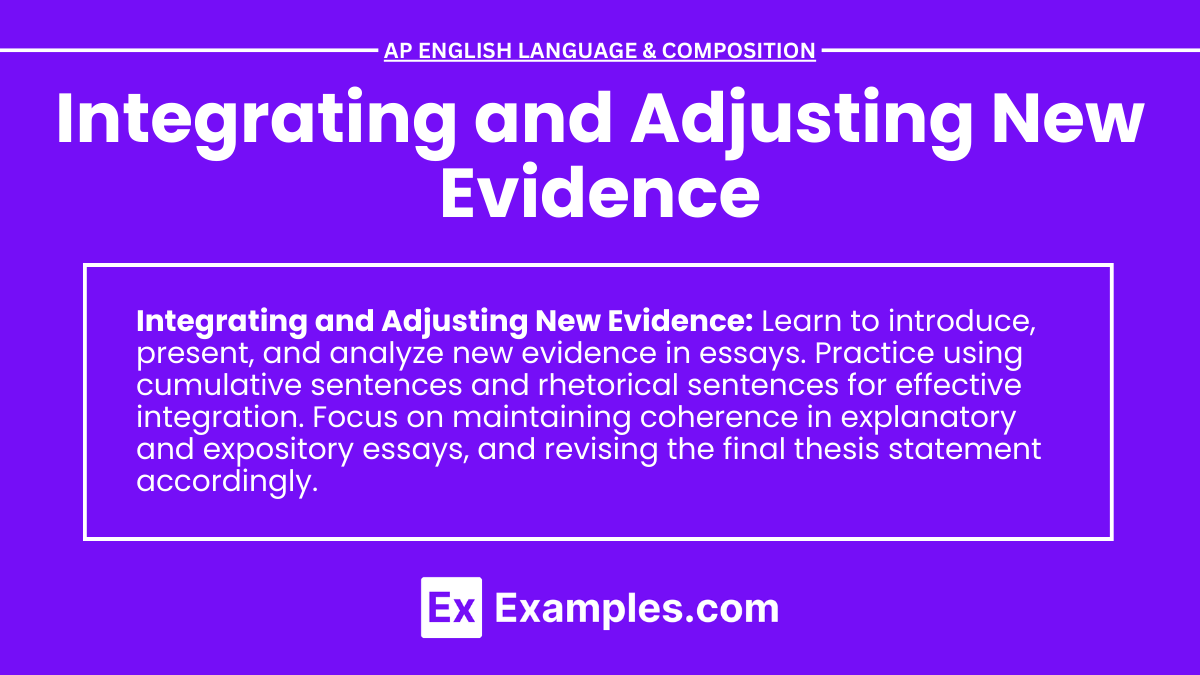In the AP English Language and Composition exam, the ability to integrate and adjust new evidence is crucial for crafting persuasive and well-supported essays. This skill is essential for both argumentative writing and argumentative speech, as it allows you to strengthen your arguments with credible and relevant information. By using rhetorical sentences and cumulative sentences, you can effectively present and analyze new evidence, ensuring that your thesis remains robust and responsive to different perspectives. Mastering this technique enhances the clarity, depth, and persuasiveness of your writing, making your arguments more compelling and credible.
Learning Objectives
By studying the topic of integrating and adjusting new evidence, students will achieve several key learning objectives. They will learn to enhance their critical thinking skills by evaluating and incorporating new information into their arguments. Students will develop the ability to use cumulative sentences and rhetorical sentences to effectively present and analyze evidence. They will understand how to integrate new evidence seamlessly into explanatory essays and expository essays. Additionally, they will master the art of refining their final thesis statement in response to new evidence, ensuring it remains accurate and persuasive. Mastery of these techniques will enable students to produce well-supported, credible, and nuanced essays.
Understanding Evidence Integration
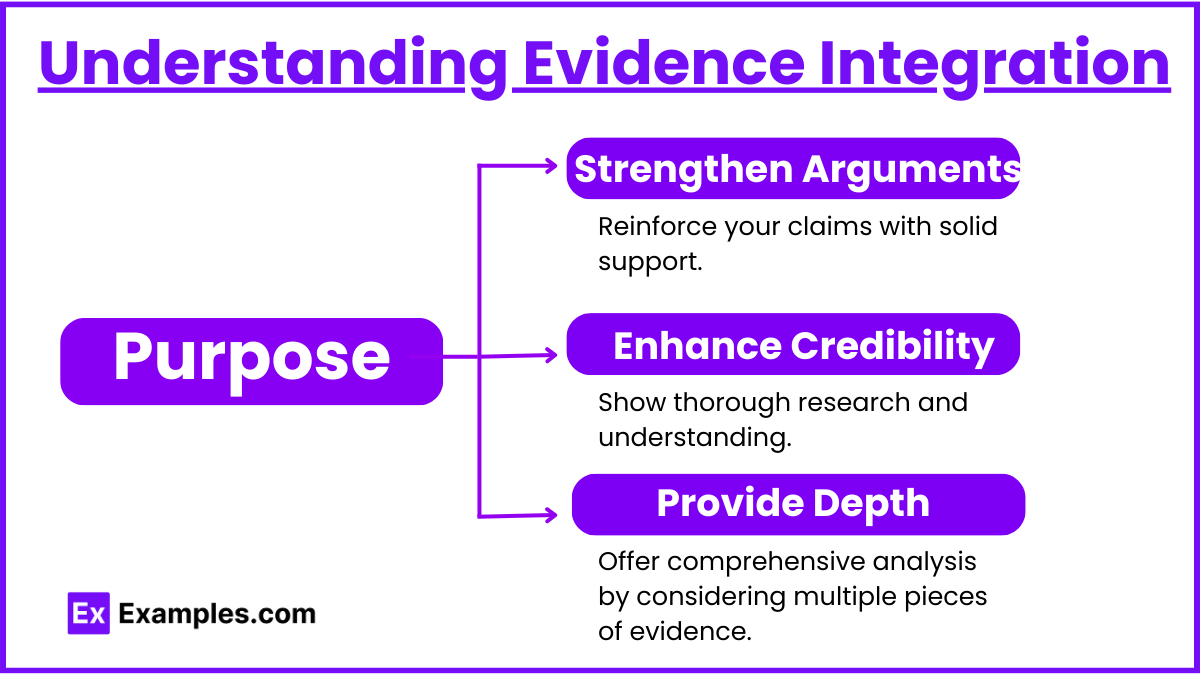
Definition
Evidence integration involves incorporating new data, quotes, statistics, or examples into your writing to support or refute your arguments. It requires careful consideration of the relevance and impact of the evidence on your thesis.
Purpose
- Strengthen Arguments: Reinforce your claims with solid support.
- Enhance Credibility: Show thorough research and understanding.
- Provide Depth: Offer comprehensive analysis by considering multiple pieces of evidence.
Types of Evidence
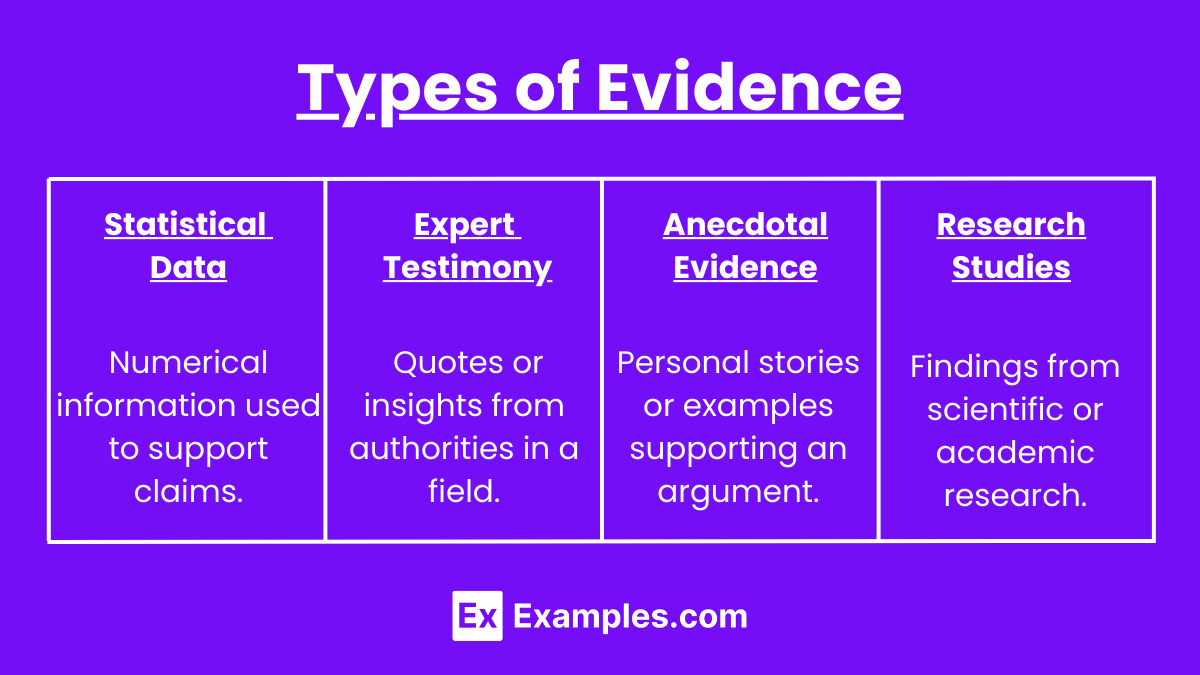
Statistical Data
- Definition: Numerical information used to support claims.
- Example: “According to the EPA, carbon emissions have decreased by 12% over the past decade.”
Expert Testimony
- Definition: Quotes or insights from authorities in a field.
- Example: “Dr. Jane Smith, an environmental scientist, states that renewable energy sources are crucial for reducing pollution.”
Anecdotal Evidence
- Definition: Personal stories or examples.
- Example: “John Doe’s experience with solar panels demonstrates the practical benefits of renewable energy.”
Research Studies
- Definition: Findings from scientific or academic research.
- Example: “A study published in the Journal of Climate Change found a significant correlation between deforestation and global warming.”
Integrating New Evidence
Steps for Integration
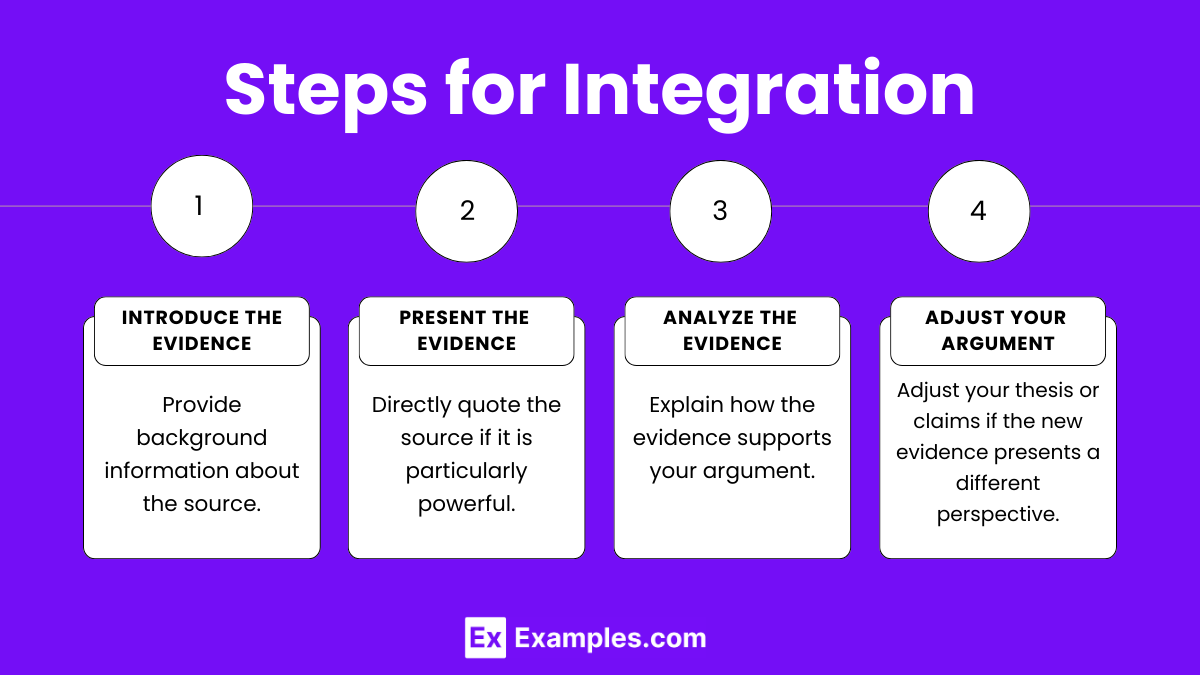
- Introduce the Evidence
- Context: Provide background information about the source.
- Example: “In a recent study conducted by Harvard University…”
- Present the Evidence
- Quoting: Directly quote the source if it is particularly powerful.
- Paraphrasing: Rewrite the information in your own words.
- Example: “The study revealed that…”
- Analyze the Evidence
- Explanation: Explain how the evidence supports your argument.
- Connection: Link the evidence back to your thesis.
- Example: “This data supports the thesis by showing…”
- Adjust Your Argument
- Modification: Adjust your thesis or claims if the new evidence presents a different perspective.
- Relevance: Ensure the evidence is relevant to your overall argument.
- Example: “In light of this new evidence, it is clear that…”
Techniques for Effective Integration
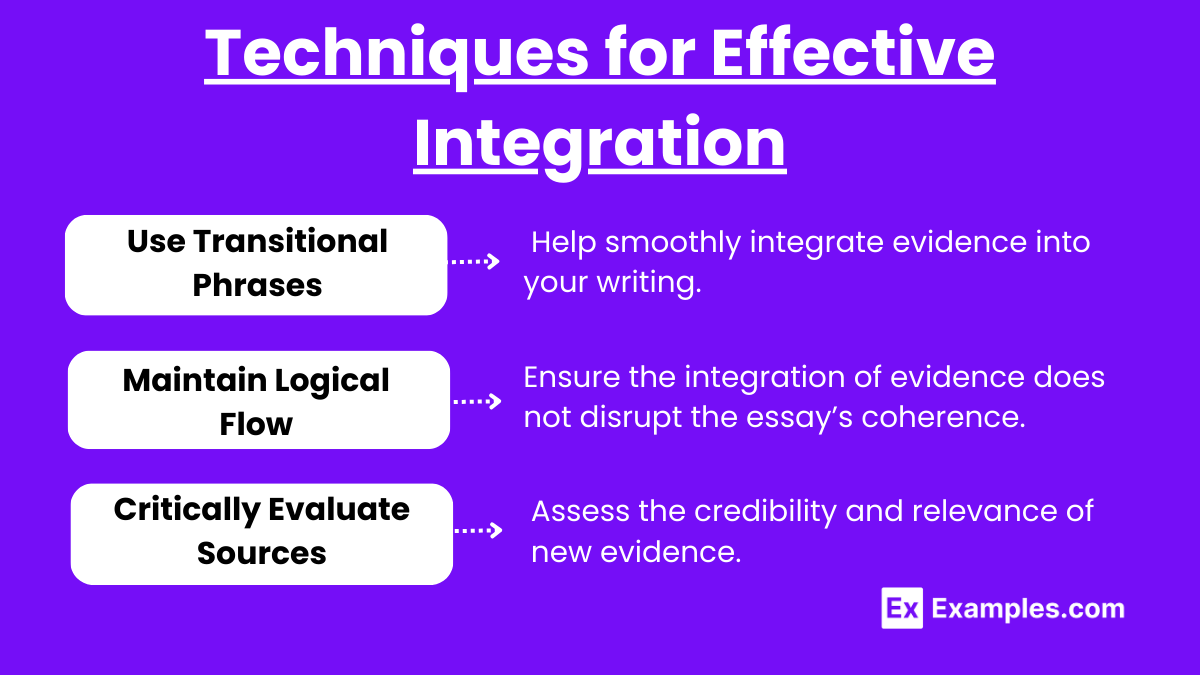
Use Transitional Phrases
- Purpose: Help smoothly integrate evidence into your writing.
- Examples: “According to,” “As stated by,” “In the words of,” “The data shows.”
Maintain Logical Flow
- Purpose: Ensure the integration of evidence does not disrupt the essay’s coherence.
- Example: Seamlessly weave evidence into your paragraphs.
Critically Evaluate Sources
- Purpose: Assess the credibility and relevance of new evidence.
- Example: Use peer-reviewed journals, reputable books, and authoritative sources.
Adjusting to New Evidence
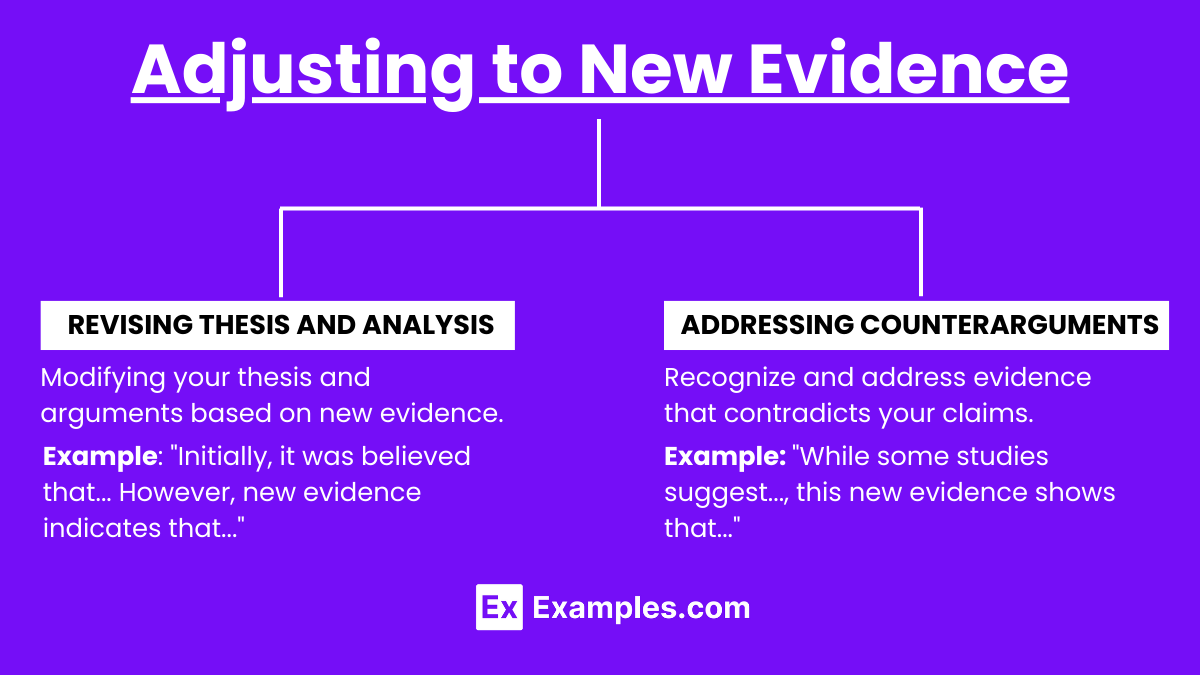
Revising Thesis and Analysis
- Adaptability: Be prepared to revise your thesis if new evidence significantly impacts your argument.
- Example: “Initially, it was believed that… However, new evidence indicates that…”
Addressing Counterarguments
- Incorporate Counterevidence: Recognize and address evidence that contradicts your claims.
- Example: “While some studies suggest…, this new evidence shows that…”
Examples
Example 1: Argumentative Essay on Renewable Energy
Original Thesis: “Renewable energy is the best solution for reducing pollution.” New Evidence: A study showing high initial costs of renewable energy. Adjusted Argument: “While renewable energy has high initial costs, the long-term environmental and economic benefits make it a sustainable solution for reducing pollution.”
Example 2: Expository Essay on Education Reform
Original Thesis: “Standardized testing improves educational outcomes.” New Evidence: Research indicating standardized tests may not accurately measure student learning. Adjusted Argument: “Although standardized testing has some benefits, alternative assessments may provide a more accurate measure of student learning.”

